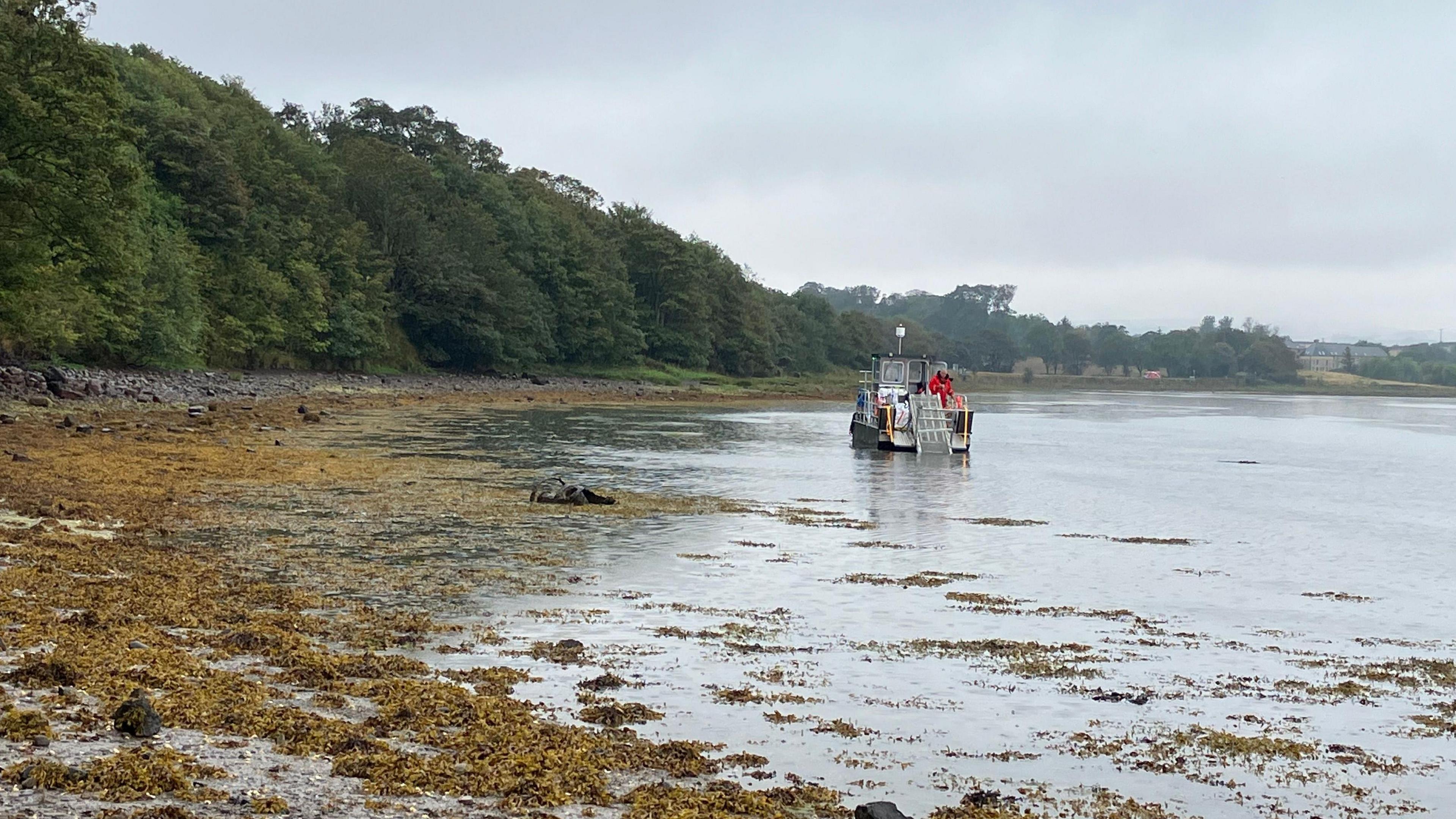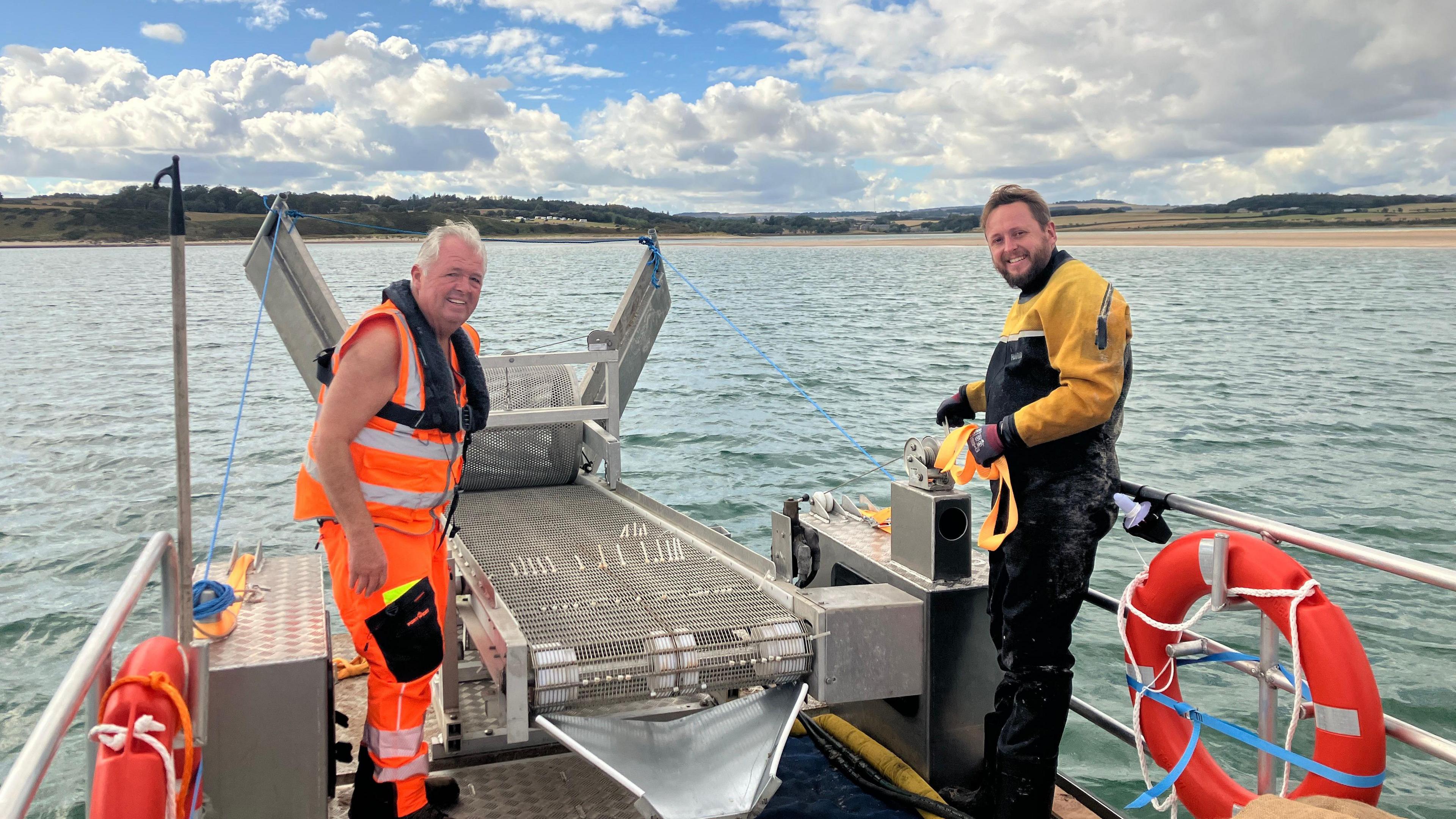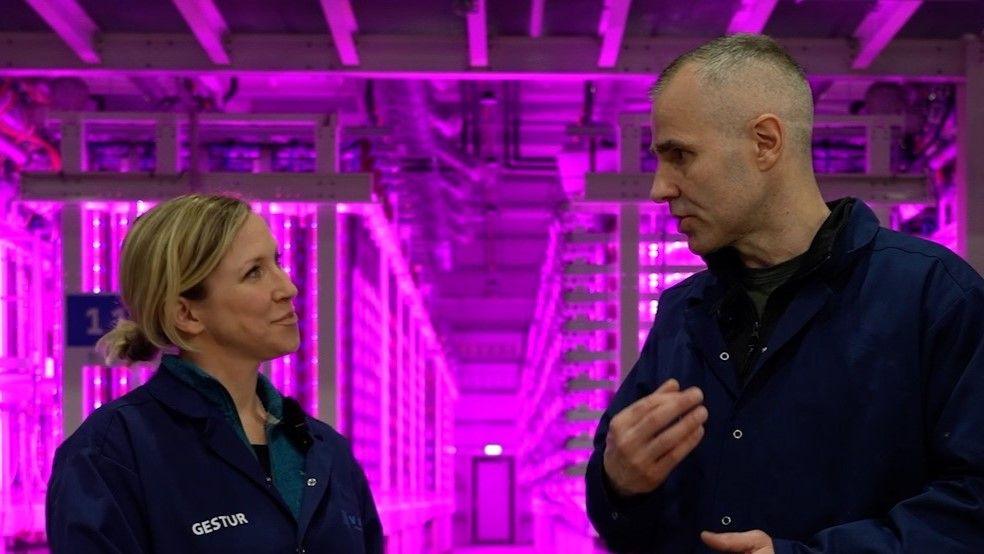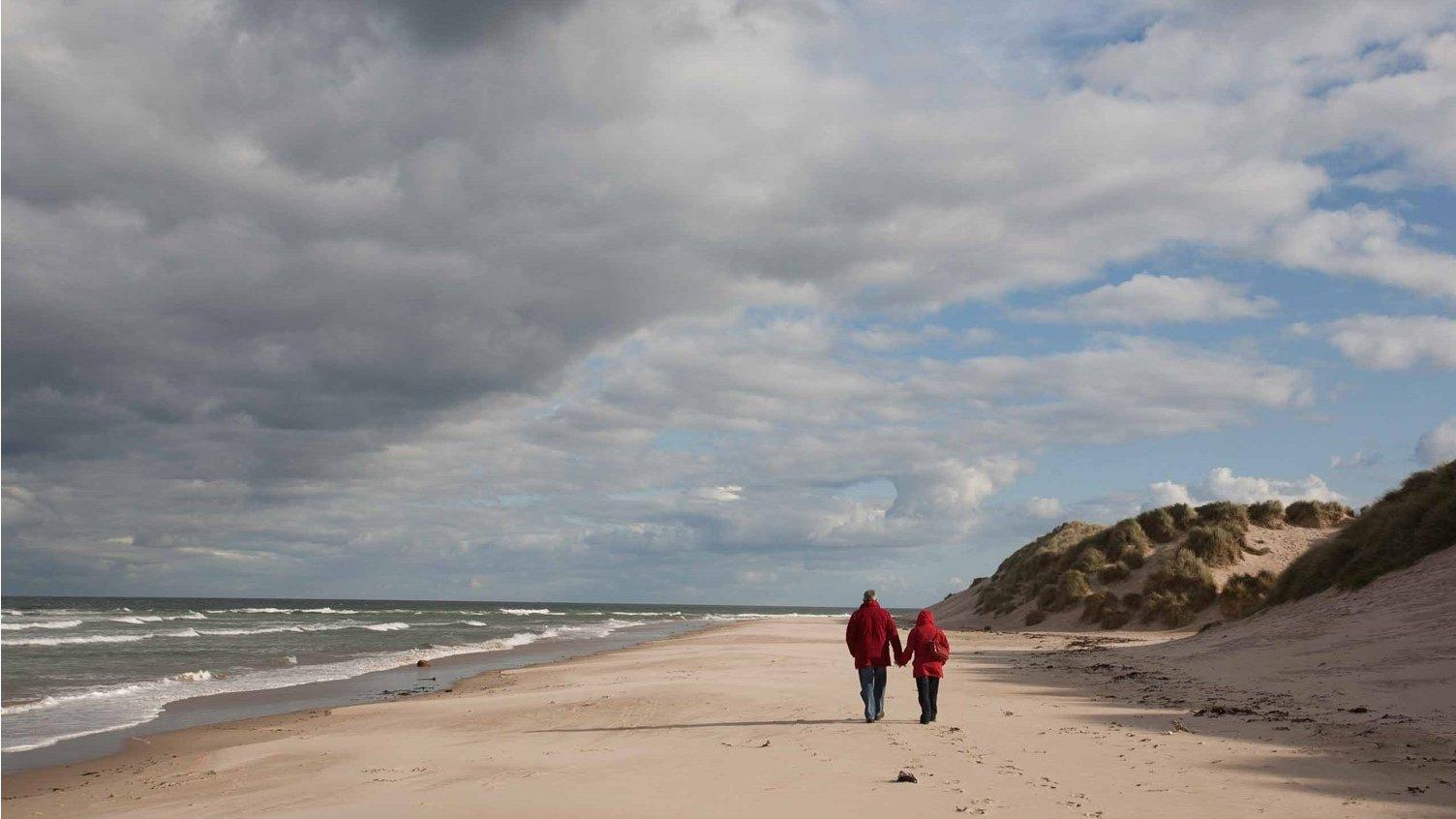Mass of green algae removed from bird sanctuary

Budle Bay has been covered in green algae but should be muddy and brown
- Published
A huge mass of green algae has been removed from a bird sanctuary as part of efforts to protect local wildlife.
Blooms of macroalgae have been growing at Budle Bay near Bamburgh in Northumberland and its presence risks killing seagrass and damaging habitats.
Researchers have been working to find out why the blooms have grown at the bay and have been pioneering new ways to safely remove it.
Dr Heather Sugden, senior lecture of marine ecology at Newcastle University, said the algae "can cause the species we find in the sediment to die and not exist anymore and that can cause problems for migratory birds because they rely on those species to feed".
Budle Bay is part of the Lindisfarne National Nature Reserve and each winter becomes home to thousands of wildfowl and wading birds.
It contains seagrass which serves as a wildlife habitat and has strong carbon capture capabilities.

Researchers from Life Wader have removed huge mats of green algae from the Northumberland bay
Dr Sugden said the algae blooms have grown in the area due to an increase in nutrients flowing into the bay and scientists have been working to find the source of the deposits.
The researchers are from Life Wader, an EU-funded project aimed at improving nature recovery, and consist of professionals from Natural England, Newcastle University, the Environment Agency and Tweed Forum.
They have carried out large-scale removal of the algae from the bay and are also trialling techniques to remove smaller sections from around seagrass without damaging the plants.
The bay will now be monitored to find out what impact removing the algae has had on the environment.
Life Wader is also looking into whether the algae can be harvested each year and whether it can be reused.
Dr Sugden said the algae could be repurposed in a variety of different ways.
"We might use it for things like fertiliser, or we might use it to create paints or dyes, or we might use it for energy production," she said.
Follow BBC North East on X, external, Facebook, external, Nextdoor and Instagram, external.
Get in touch
Do you have a story suggestion for BBC Tyne?
Related topics
More stories
- Published21 January

- Published23 August 2023
